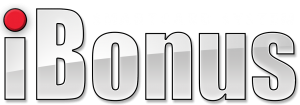A field proven, secure solution for smart card payment and bonus point application
iBonus Terminal is the most powerful and sophisticated off-the-shelf solution available today. Comprehensive member card transaction and smart card 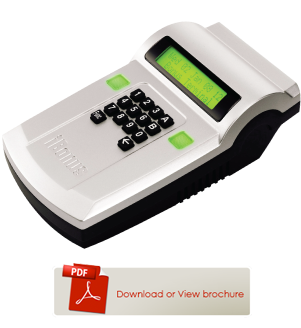

iBonus Static Terminal
this little device. It enables the card handling process to be done at any branch. Being off-the-shelf and field proven solution, iBonus terminal can let you issue smartcards with your own brand in no time. It is the heart of the loyalty operation. It compactly contains an embedded web server, journal database with built-in software applications that operates independently without the need of an extra PC. Operation is carried out using a keypad for input and a built-in smart card reader to transfer information to and from the Member Card. Transaction records stored in the Terminal can be collected by iBonus Server software through TCP/IP network.
Issuing new Member Cards
New Member Cards are issued by first presenting a Master Card supplied by the factory to assign a Company Code and a range of unique Card ID’s. The Company Code is used to identify a particular operator. Member Cards will not be able to operate on Terminals if the Company Code of the Member Card is different from that of the Terminals.
Issuing staff cards
Staff Card is basically a conversion of Brand New Card (Newly formatted card) to Staff Card. Staff Card login is required for the Terminal to accept the Member Card operation such as addition and deduction of bonus points. Staff Card logout is recommended when the staff is not attending the Terminal. Staff login and logout action are recorded as transaction in the Terminal, and they provide trails for auditing purpose.
Doing Card Transactions
iBonus Terminal provides generic transaction types for performing calculations of stored values, such as, Purchase, Reload, Bonus Point Addition and Redemption. The behavior of all transactions types are consistent with the combinations of card status, system setting and system status, like, decryption keys, expiry settings, decimal mode, bonus rate, blacklist, card sector usage, card value limits. Without the need of redeveloping the sophisticated algorithm behind, anyone who are new to smart card systems can make use of them and quickly deploy a loyalty system.
Sending Transactions back to iBonus Server
After finishing a transaction, such as adding bonus points, redemptions, staff login, the transaction record is stored in the Terminal’s transaction queue. There are 5,000 buffer in the transaction queue. The records in the transaction queue are sent to server as soon as the network connection is ready. The terminal stops accepting transaction when the queue is full.
Advanced Card handling
iBonus Terminal provides advanced card handling function which allows card expiry date extension (Card Renew), Lost card replacement and Corrupted card repair at Terminals of any branches. It saves up the establishment of central call center for card control purpose.
Receipt Reprint and Auto Reprint
When printer is connected, a receipt is printed whenever any transaction is made. Press the button A if you wish to reprint the receipt of the last transaction. If auto reprint is on, two receipts will be print for every transaction.
Connects to POS System (Cash Machines)
iBonus System unifies the smart card system with the POS system. All the transaction types in iBonus Terminal are accessible by POS through RS-232 serial port. Coming with a readymade Windows based API, all the generic transaction set and advanced card handling functions can be accessed with ease. In addition, with the help of read member card and read staff card functions, POS can command the most suitable transaction based on the POS side member profile.
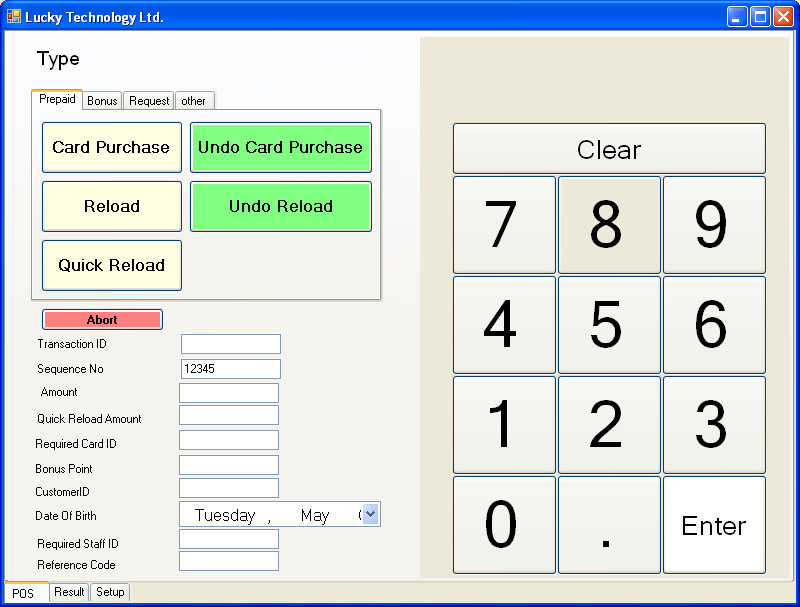

As there is no real time query between iBonus Server and Terminals, the data requirement of processing power of iBonus Server is low. iBonus Server can be installed in any Windows XP desktop computer. Different Terminals in different branches are identified by the difference in their branch code. Different Terminals within the same branch have the same branch code but different terminal code. Both branch code and terminal code range from 1 to 9999. The connection between Server and Terminal is always from Terminal to Server. Even the data is sent though the Internet and the terminal is set to have local IP, no NAT or port forwarding is needed for the Terminals. In one word, the connection can be established as long as the Terminal can ping the Server.
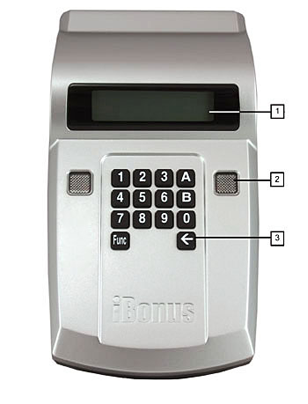
- 2 x 16 character LCD display with green backlight
- Red and green status indicator light
- Key pad and smart card antenna underneath
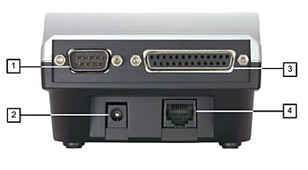
- RS 232 Serial port for cashier connection
- DC 12 volts power jack
- Receipt printer parallel port
- RJ 45 Ethernet port.
| Power | 12VDC, 600mA |
|---|---|
| Web and Database Server | Built-in |
| Transaction Buffer | 5,000 records |
| Flash memory | 32MB |
| Display | 16 x 2 LCD with Backlight |
| Receipt Printer Connectivity | ESC/POS compatible, 42 CPL, Parallel Port |
| Communications | Ethernet (10-Base T), RS232 at 57600 bps, Parallel Port |
| Real Time Clock | Last for approx. 2 days without power |
| Supported Card Type | ISO 14443A Mifare 1k Classic, Mifare 512bit Ultralight |
| RF Frequency | 13.56Mhz |
| Housing | Ploycarbonate |
| Operating Environment | Temperature: 0-45 degree C/ 32-115 degree F Humidity: Max 95%, non-condensing |
| Foot print | 4.22(W) x 7.63(D) x 2.56(H) (in) 106(W) x 190(D) x 65(H) (mm) |
| Weight | 0.35 kg. |



